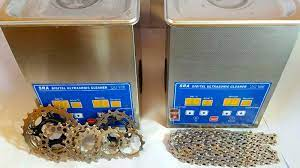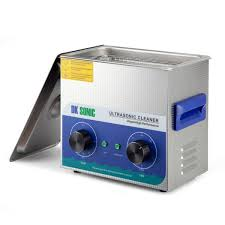An ultrasonic cleaner works by delivering ultrasonic waves at a frequency of thousands of cycles per second. The frequency used depends on the type of contaminant, the size of the part to be cleaned, and the mechanical strength of the object. Lower frequencies tend to produce larger cavitation bubbles and more powerful oscillations, which are better for strong materials, while higher frequencies are better for delicate parts.

Ultrasonic cleaners are a great way to clean various products. They can clean almost any surface or material. You can use them for anything from greasy engine components to newly machined plastic components. The ultrasonic waves are extremely powerful, allowing you to clean the most difficult-to-reach areas without harming the objects you are cleaning. For more information on using a Large Ultrasonic Cleaner, visit a site such as www.hilsonic.co.uk
Ultrasonic cleaning fluids are usually water or a non-flammable liquid. The liquid used in the ultrasonic cleaner must not contain alcohol, because it can burn. In addition, ultrasonic cleaners use a sound transducer to project high-frequency sounds into the fluid bath.
The transducer used in an ultrasonic cleaner converts energy from an external magnetic field into ultrasonic vibrations. The frequency is typically KHz, which is thousands of cycles per second. Depending on the type of ultrasonic cleaner, a transducer may be made of either piezoelectric or magnetostrictive materials.
Ultrasonic cleaning systems use high-frequency sound waves to remove grime and oxidation. These waves cause tiny bubbles to form in a liquid solution. The bubbles collapse and dislodge dirt and other particles. The resulting heat and energy from the implosions scrubs surfaces. It is a gentle cleaning method which makes it suitable for cleaning items that are delicate or have hard to reach places.

The process of ultrasonic cleaning involves three main components: the cleaning solution, the part to be cleaned, and the transducers. The ultrasonic tank and transducers must be durable and corrosion-resistant, which is why stainless steel is preferred. Integrated heating elements in the tank assembly provide heat, which enhances cavitation intensity.
The cleaning fluid used in an ultrasonic cleaner consists of water or a solvent solution. A mild alkaline solution is best for oily parts, since it breaks the ionic bond between the oil and the metal. As a result, the oil is dispersed in the liquid. In contrast, a mild acid solution is best for cleaning parts with rust or oxidation.
